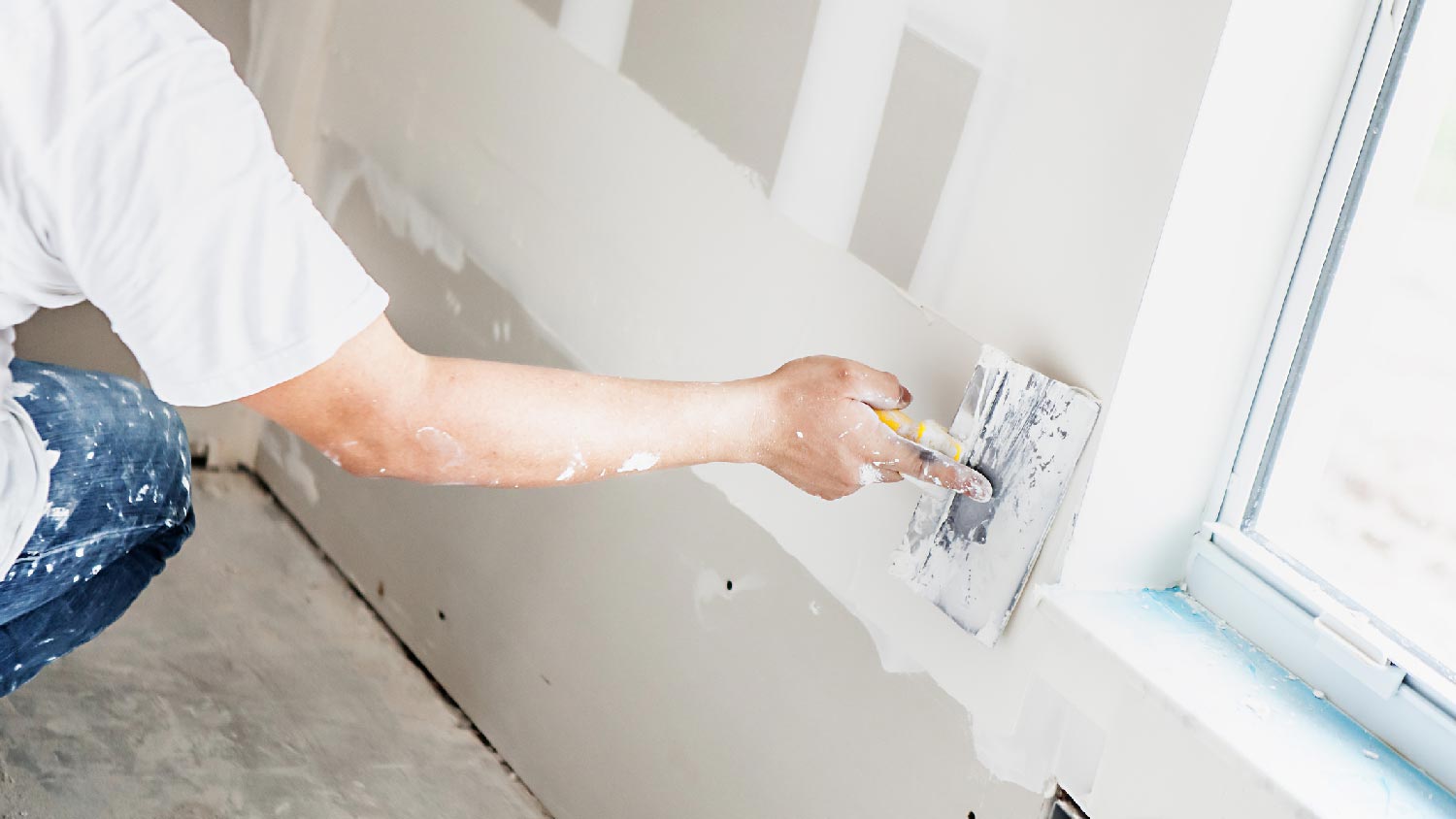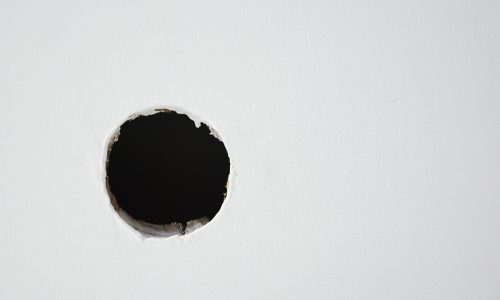Build a beautiful home aesthetic with drywall contractors and vibrant Interior Painting.
Step-by-Step Approaches to Achieving Flawless Drywall Repair Service and Installment
Attaining flawless drywall repair work and setup needs an organized strategy. It entails recognizing the various sorts of drywall and the tools necessary for the task. Proper area prep work is vital before beginning any kind of job. Interior Painting. Each action, from covering openings to setting up new sheets, demands attention to information. The procedure does not end with setup; completing methods are essential for a sleek appearance. The following steps will ensure a seamless result, but just what do they entail?
Comprehending Drywall Kind and Equipment Needed

The installment devices are similarly essential. An utility blade is vital for reducing drywall sheets, while a drywall saw can help in making specific cuts for outlets or components. T-squares assure exact dimensions, and drywall screws or nails safeguard the panels to wall studs. Additionally, a drywall lift can help with the setup of huge sheets, minimizing physical strain. Familiarity with these tools and types significantly adds to the performance and top quality of drywall jobs.
Preparing the Area for Repair Work or Installation
Preparing the location for drywall repair or installation is vital to assure a effective and smooth process. First, the surrounding space should be free from furnishings and various other obstacles to offer sufficient working area. This not just ensures security but also protects against damages to belongings. Next, it is vital to cover the flooring with decline fabrics to catch any type of debris or dirt generated throughout the work.
In addition, the walls should be evaluated for any kind of loosened paint or wallpaper that might disrupt bond. Removing these elements produces a clean surface for the new drywall. Prior to start, it is a good idea to shut off power to electric outlets or components around. Guaranteeing ample illumination in the office will further improve visibility and emphasis during the repair work or setup procedure. Interior Painting. By carefully preparing the area, one prepares for an effective drywall project
Step-by-Step Process for Patching Holes

Covering openings in drywall needs a systematic method to guarantee a smooth fixing. The primary step includes assessing the size of the hole. For tiny holes, a patching compound may be sufficient, while bigger openings require a patch. Next, the damaged area needs to be cleaned up and prepared by removing any kind of loose debris.
For tiny holes, using spackling compound with a putty knife is advised, smoothing it over the hole and feathering the sides. When completely dry, fining sand the location ensures a smooth surface. For bigger openings, a drywall patch must be cut to dimension, positioned over the opening, and protected with screws. After installing the spot, the exact same spackling process is duplicated, followed by fining sand.
The patched area has to be keyed and painted to match the bordering wall. This careful process ensures a professional look and extends the life-span of the repair work.
Mounting New Drywall Sheets: A Comprehensive Guide
Mounting new drywall sheets calls for careful planning and implementation to ensure a visually attractive and sturdy surface. The location should be gauged precisely to determine the number of sheets required. It is important to choose the appropriate thickness, generally 1/2-inch for indoor walls and 5/8-inch for ceilings or fire-rated applications.
Next off, the studs or framework must be inspected for any type of abnormalities, ensuring they are aligned and appropriately spaced. When positioning the drywall sheets, they should be positioned horizontally to decrease joints and improve structural stability. A drywall lift can be advantageous for above installments.
Attaching the sheets with drywall screws at ideal intervals makes specific a safe installment. It is necessary to countersink the screws slightly below the surface to get ready for the completing process. Complying with these standards will certainly bring about a solid foundation, ready for the next steps in drywall finishing.
Finishing Touches: Taping, Mudding, and Sanding Methods
When the drywall sheets are safely secured, the focus moves to the finishing touches that will supply a refined look. This procedure starts with taping, utilizing either paper or fiberglass mesh tape to cover the joints between sheets. The tape assures a smooth change, decreasing the risk of splitting. Following insulation, mudding is important; a joint substance is applied over the tape to load spaces and develop a seamless surface area. Commonly, several layers are required, every one feathered out better than the previous to minimize exposure.
After enough drying out time, fining sand is the final action in achieving a remarkable surface. A fine-grit sandpaper is utilized to smooth the dried substance, ensuring there are no imperfections or bumps. Focus to detail during this stage is considerable, as it considerably affects the total appearance of the wall. Completion outcome ought to be an also, professional-looking surface all set for priming and painting.
Often Asked Concerns
Just how Do I Choose the Right Drywall Thickness for My Job?
To pick the right drywall thickness, think about the project's function, location, and architectural requirements. Criterion thicknesses consist of 1/2-inch get more info for general usage and 5/8-inch for fire-rated applications, guaranteeing durability and conformity with building regulations.

Can I Set Up Drywall Over Existing Drywall?
Yes, installing drywall over existing drywall is feasible. Nonetheless, it is crucial to guarantee the underlying surface area is safe and totally free from damages. Proper attachment and factor to consider of density are vital for an effective setup.
What Are the most effective Practices for Drywall Disposal?
The finest methods for drywall disposal include recycling when possible, utilizing local waste management solutions, and adhering to standards for unsafe products if suitable. drywall contractors. Effectively securing and identifying waste guarantees conformity and safety and security throughout disposal
How much time Should I Await Mud to Dry Prior To Sanding?
Usually, one must wait 24 hr for drywall mud to dry before fining sand. Nonetheless, drying time can differ based upon humidity and temperature, so examining for a firm appearance is advisable before continuing.
Are There Eco-Friendly Drywall Options Available?
Yes, green drywall choices are readily available. These alternatives often utilize recycled materials, low-VOC adhesives, and lasting production approaches, reducing ecological effect while providing efficient insulation and resilience for numerous building and renovation jobs.
An energy knife is essential for cutting drywall sheets, while a drywall saw can aid in making accurate cuts for electrical outlets or fixtures. Preparing the area for drywall repair service or installation is crucial to guarantee a smooth and effective process. Covering openings in drywall requires a methodical strategy to assure a smooth repair work. Mounting new drywall sheets needs mindful planning and execution to ensure a aesthetically appealing and durable surface. Yes, mounting drywall over existing drywall is possible.